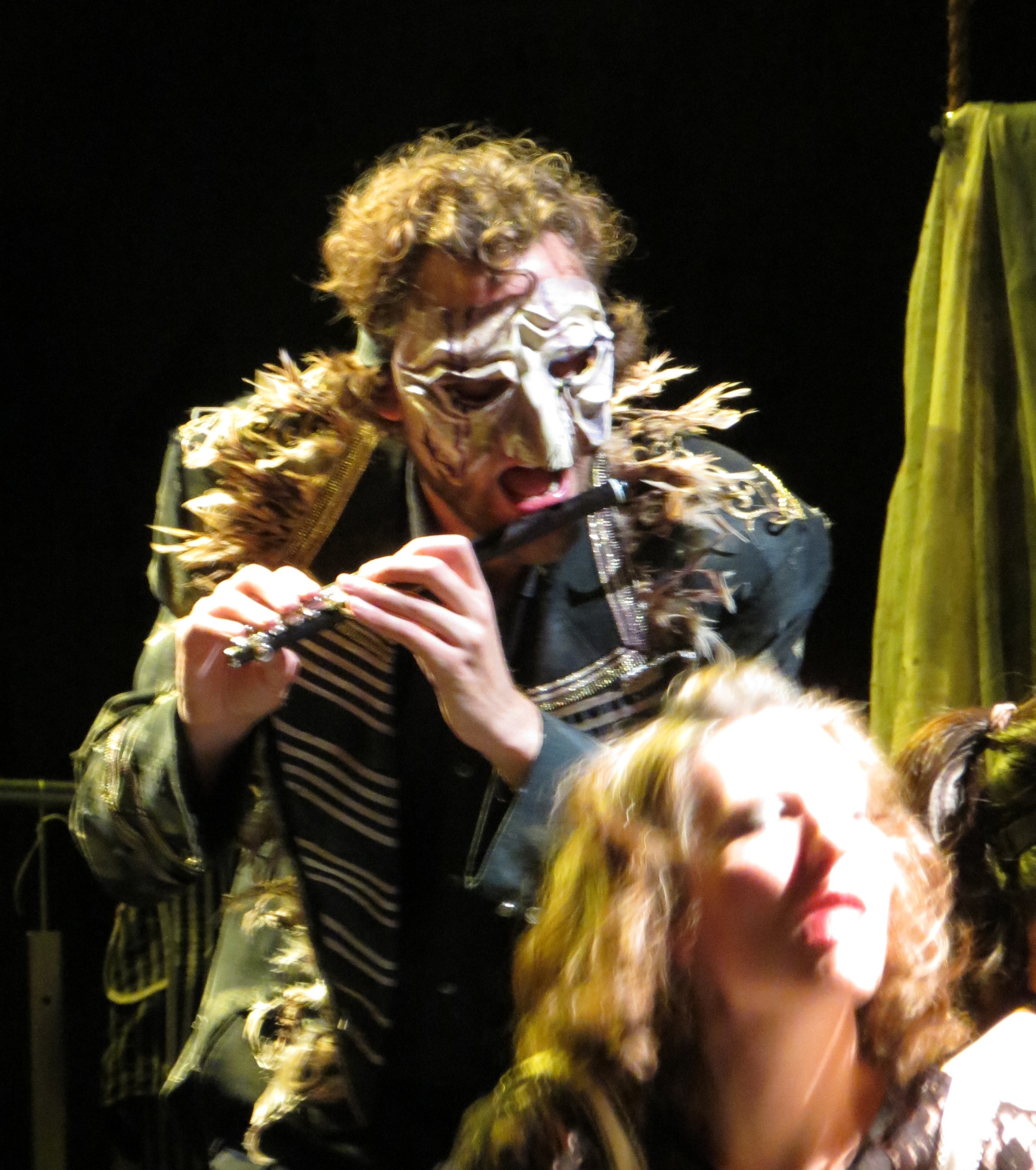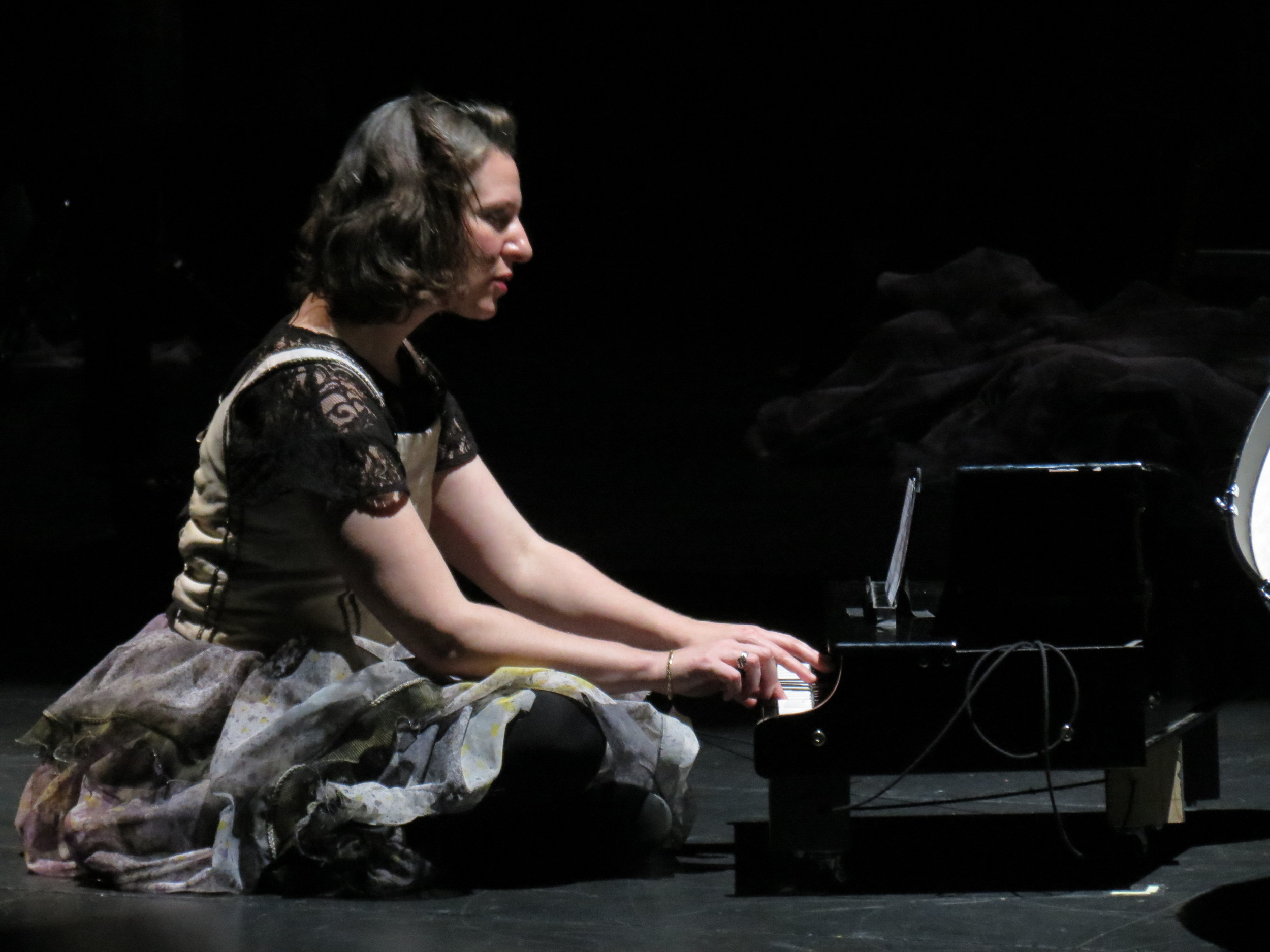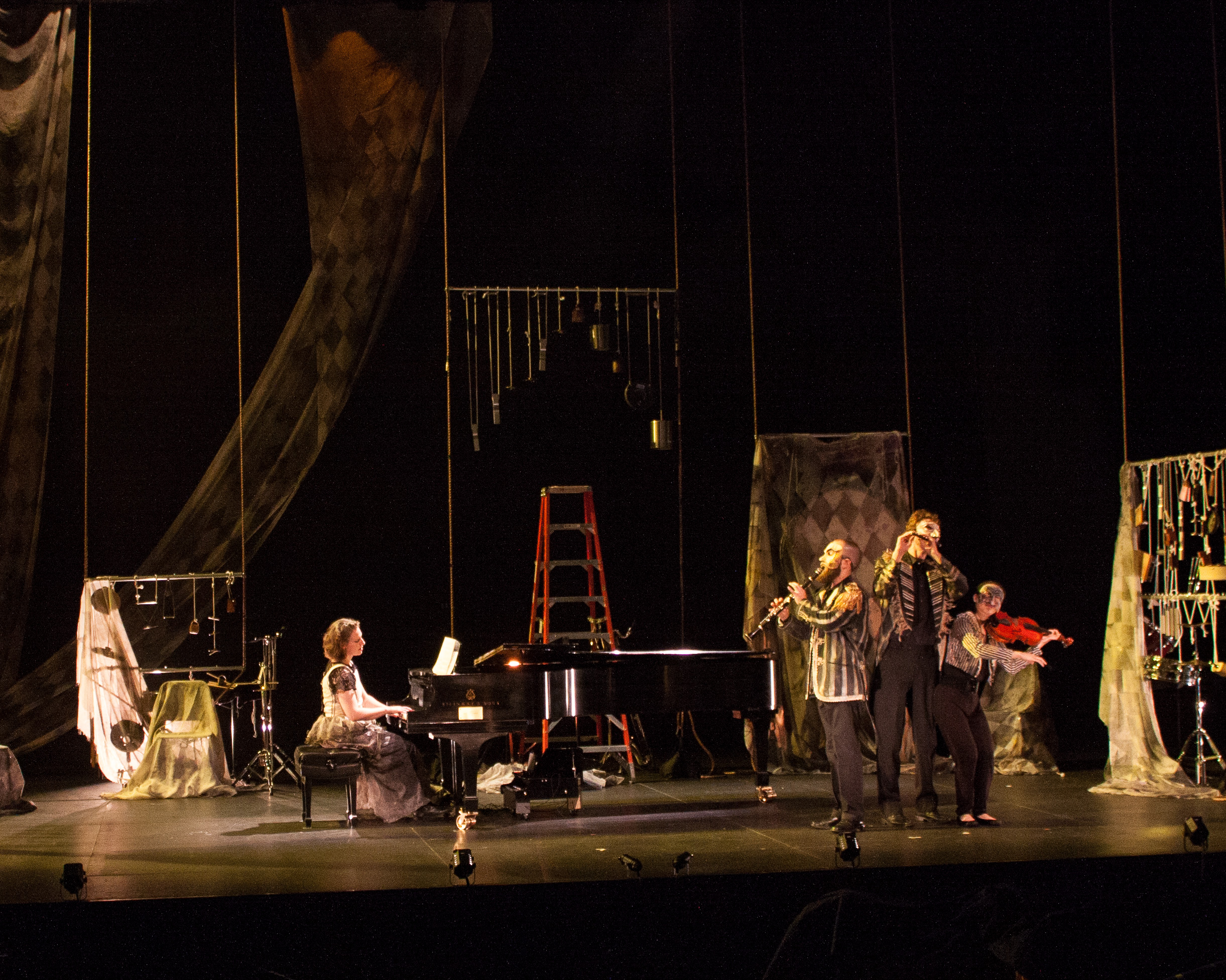COLOMBINE’S PARADISE THEATRE
DIRECTOR
PRODUCTION DESIGNER
CHOREOGRAPHER
A new full-length music theater work for eighth blackbird ensemble composed by Amy Beth Kirsten imagines a woman locked within a world of mystery and menace. Beguiled and tormented by creatures of her imagination, she is held immobile between darkness and light. The piece, performed entirely by the members of the ensemble, challenges conventions of musical performance and narrative to seek a wilder truth.
Colombine's Paradise Theater performed in New York City, Washington DC, and Chicago to meet enthusiastic critical reception, with both the Washington Post and NewMusicBox declaring the work a "tour de force".
Colombine’s Paradise Theatre is the result of an extensive collaboration between Amy Beth Kirsten (composer), Mark DeChiazza (director) and eighth blackbird. A 21st century fantasy on a 17th century form of Italian theater, CPT takes on old musical forms and the iconography and text of the commedia dell’arte to ultimately examine timeless meaning that can be found within the act of performance. Kirsten and DeChiazza worked closely to develop a musical and theatrical language that enables eighth blackbird to become the characters in the story – one that inevitably challenges them to sing, dance, and play simultaneously.
DeChiazza's director's note:
When I first began work on Colombine’s Paradise Theatre, I wondered what compelled Amy, as contemporary composer, to revive the iconography of the Commedia dell’arte. I noticed that she had composed the musicians’ parts so that an instrument is sometimes the voice of a character while at other times it isn’t. For example, the piano can be the voice of Colombine, but sometime it is simply a piano in the mix. I came to realize that this structure is analogous to Commedia—characters put on a mask, instantly assuming an identity, and when they take of the mask they are simply an actor. Since the mask organizes meaning, it is even possible for more than one actor to wear the same mask simultaneously. The mask conjures a context through which we interpret the expression of a performer’s body and voice. But there is a tension between the identity of the performer—especially a contemporary performer—and that of the Commedia character she inhabits. To step into the shell of Colombine the performer must surrender some of herself. Likewise, on stage Colombine occupies a luminous world of constructed fantasy that simultaneously confines and liberates her. I think actors, musicians, dancers all experience this unique dichotomy: the feeling of being wildly free—free to explore even the strangest darkest places—and the constraint of being completely contained within and controlled by the shape of a work.
Of the process of collaboration, Kirsten and DeChiazza say this:
The language of the piece is both musical and visual and was developed over the course of two years and six workshop periods. Once a basic framework and language of the piece was established, the method that guided us was to think of the work is as a “storybook poem” – “storybook” because of its linear structure, colorful characters, and use of imagery; and “poem” because of its associative and multifaceted
relationship to meaning. In other words information about individual characters as well as the relationships between them are reinforced on many levels – from the music and text to the movement, from the set design to costumes and lighting. This method allowed us a great sense of freedom and playfulness as we made the piece and the incredibly generous number of workshop periods maximized our collective sense of discovery. “I found a true collaborator in Mark who has the rare ability to delight in the questions – those unavoidable moments mid-process where you are in the dark together, hoping that the light will come on,” says Kirsten. “We really had a terrific time building this weird and wonderful world together.”
The music of CPT plays with, among other things, the concept of musical movement. Much of the music is composed with its physicality in mind, so much so that it’s not only musical ideas that make up the fabric of the piece, but also the body movements required to play particular gestures. Inextricably linked to sound, these physical gestures are treated compositionally throughout. The music and the staging, developed in cooperation with eighth blackbird, are geared to the particular talents of the individual players. Kirsten drew inspiration from each of the instrumentalists and designed the sound world – and the characters – around an expanded palette that often merges the players’ voices with played parts, creating an amalgam of character/instrument/body/voice.









